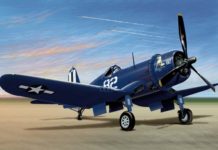A Coast Guard Reserve patrol boat of the “Corsair fleet” recovered from the sea around San Pedro California a water logged pile of gummed paper attached to what looked like a large bicycle wheel. The date was November 5, 1944 and the first of many Japanese balloon bombs had just been recovered. These devices began showing up across the country, mainly in the Northwest.
They were part of a last ditch effort by Japan to both scare the united states out of the war and to finally avenge the Doolittle Raid of two years previous. The Japanese launched the balloons from the Sendai area of northern Honshu Island. The designs varied but in general the balloons held 19,000 cubic feet of hydrogen, were 33 1/2 feet in diameter, made from hundreds of small pieces of paper glued in four plys together and lifted anywhere from 25 to 65 pounds of various explosives. Once released in Japan, the balloons were simply carried across the Pacific by recently discovered high air currents in roughly four days.
The mechanism of the bomb itself was set to release its load of explosives after that time period had elapsed, at which time it -should- be somewhere over North America. The Japanese nicknamed their devices ‘Fugu’ after the deadly pacific puffer fish which the inflated balloon resembled.
It was hoped that the Fugu would ignite forest fires in the giant old growth regions of the western United States. There is no known record that this occurred with any success. The devices however did draw blood on a peaceful Sunday afternoon. On May 5, 1945 in the small town of Bly, Oregon a woman and five children found one of the devices at a picnic in the surrounding hillside and the resulting explosion killed all six in front of dozens of shocked onlookers. An effort by the War Department kept the news of the deadly Fugu balloon as suppressed as possible to avoid widespread panic.
American military and civilian officials suspected the bombs could be an experiment or even a precursor to a larger attack using biological weapons carried by similar balloons. The War Department took immediate protective measures and drafted plans for combating anything that the balloon operations might bring. At the end of the war in September 1945 the Eastern and Western Defense Commands still had a complement of about 17,000 officers and men on duty, watching for Fugu or anything else that may have come. The only other known use of armed unguided ballons on warfare was on August 22, 1849 when the Austrians launched 200~ pilotless bomb carrying balloons against the city of Venice -also without much success.
Surviving Fugu balloon bombs are on exhibit in the National Balloon Museum in Albuquerque New Mexico, the Washington State Army National Guard Museum on Camp Murray and in the Smithsonian in Washington among other places. However these may not be the only Fugu left on the continent. Of the 9000 balloons that were set free to make its destiny on the jet stream it is known that only 30 were shot down by fighters or anti-aircraft artillery. Another 100 were found during the war after they had landed.
Since August 1945, 150 more have been found stretching from The Yukon Territory to Mexico. It is thought that ~1000 Fugu balloons made it across the Pacific so by this figure as many as 700 of these one way mad bombers could be left in the forests, deserts, lakes and mountains of North America. Seeing that each was activated by a 64-foot long delayed fuse upon separated from the balloon a great number of these may be unexploded.
Such is the legacy of modern war.
Sources:
- Japan’s World War II Balloon Bomb Attacks on North America: Mikesh, Robert C., 1978, Smithsonian Institute Press
- Silent Siege III: Japanese Attacks on North America in World War II: Webber, Bert, 1992, Webb Research Group








